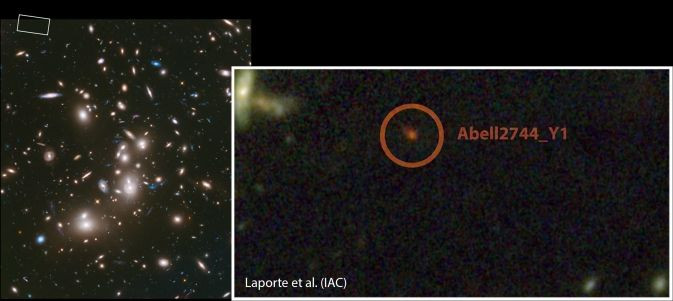NASA’s Spitzer And Hubble Telescopes Spot A Distant Galaxy That Can Take Us Back To The Cradle Of Our Universe

Two NASA space telescopes -- the Spitzer and the Hubble -- have found what astronomers believe may be one of the most distant galaxies ever discovered.
The newly found galaxy, named Abell2744 Y1, is expected to help astronomers look back to a time when the universe was only about 650 million years old. The current age of our universe is 13.8 billion years, NASA said, and noted that Abell2744 Y1 is about 30 times smaller than the Milky Way galaxy and is producing about 10 times as many stars as its larger counterpart.
“Just a handful of galaxies at these great distances are known,” Jason Surace of NASA's Spitzer Science Center at the California Institute of Technology, Pasadena, said in a statement. “The Frontier Fields program is already working to find more of these distant, faint galaxies. This is a preview of what's to come.”
According to NASA, the Frontier Fields program has pushed the limits of how far back astronomers can see into the distant universe, using harnessing several multi-wavelength Great Observatories, including the Chandra X-Ray Observatory and the Compton Gamma Ray Observatory.
While the Spitzer Telescope is capable of detecting infrared light, the Hubble Telescope sees visible and shorter-wavelength infrared light, and the Chandra Telescope sees X-rays. The telescopes also get help from natural lenses -- peering through clusters of galaxies, where gravity magnifies the light of more distant galaxies.
“The Frontier Fields program will image six galaxy clusters in total,” NASA said. “Hubble images of the region are used to spot candidate distant galaxies, and then Spitzer is needed to determine if the galaxies are, in fact, as far as they seem. Spitzer data also used to help determine how many stars are in the galaxy.”
If the distance to the galaxy is confirmed, astronomers said, it would be one of the farthest galaxies known. According to astronomers, Abell2744 Y1 has a redshift of 8, which is a measure of the degree to which its light has been shifted to redder wavelengths due to the expansion of the universe. The farther away a galaxy, the higher the redshift.
© Copyright IBTimes 2025. All rights reserved.





















